Business Continuity Management Software for GRC Teams
Demonstrate control over disruption risk with a Business Continuity Management program that’s built for oversight, accountability, and action.
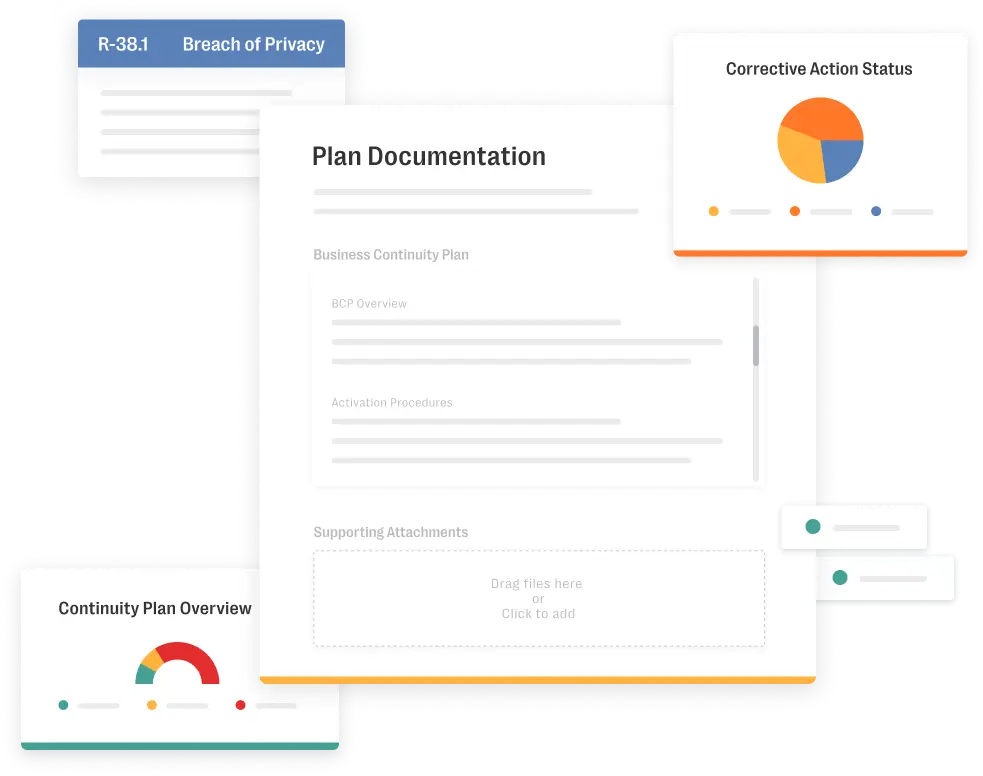
Trusted by over 1,000 leading global organizations






Resilience starts with risk-aligned business continuity
Most continuity plans are static documents, disconnected from the organization’s evolving risk landscape. Resolver’s Business Continuity Management (BCM) software unifies risk, continuity, and compliance into a single source of truth—enabling faster decisions, cross-functional alignment, and the executive-level visibility regulators expect.
Leverage comprehensive impact assessments to align the business to key continuity risks
Start prioritizing what’s truly critical with Structured Business Impact Analyses that capture recovery objectives, show dependencies and resources, and evaluate risk in one view.
- Stronger prioritization: Align continuity with high-impact processes and critical risk areas.
- Full visibility: Use dependency mapping to see resources and relationships for each critical process. Track how disruptions ripple upstream and downstream so you can close gaps before they hit revenue, customers, or compliance.
- Regulatory alignment: Map recovery objectives to ISO 22301, FFIEC and other standards. Link continuity plans to risk programs to prove resilience and cut regulatory risk.
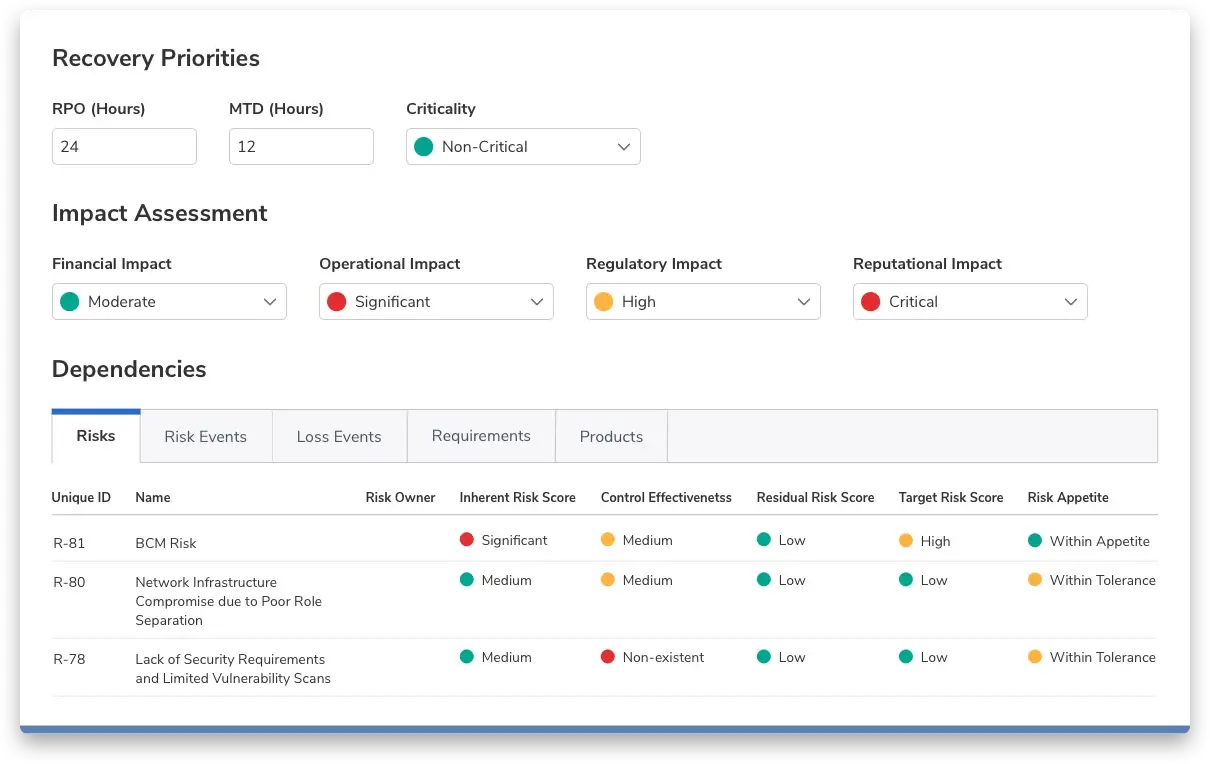
Turn continuity plans into actionable workflows with clear ownership
Move beyond static BCP documents. Resolver builds actionable continuity workflows with clear owners, tasks, and escalation paths. In a crisis, your teams act in sync, not in silos.
- Clear accountability: Every plan includes owners, tasks, and review dates so nothing falls through the cracks.
- Improved coordination: Foster collaboration and transparency across business units. A single source of truth supports shared context when responding to disruption.
- Rapid execution: Teams know exactly what to do and who to engage in the first minutes of a response.
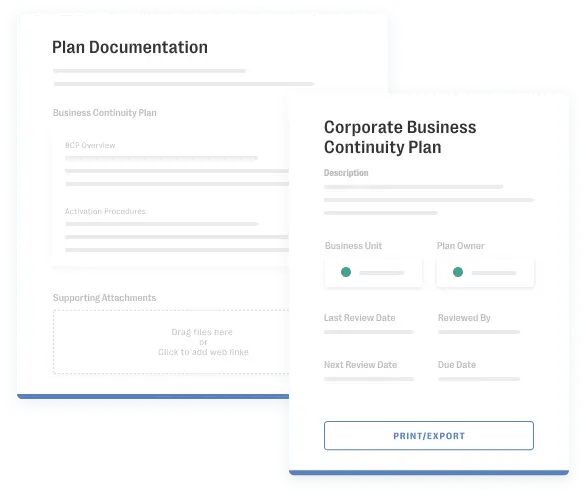
Validate your strategy with exercises and real-time feedback
Find weaknesses before a crisis does. and document tabletop exercises directly in the platform to simulate scenarios, analyze gaps, test and improve recovery strategies.
- Exercises: Validate readiness and response with simulation-based exercises.
- Expert-guided execution: Facilitate exercises with good practices that guides you through exercise preparation and follow up.
- Actionable outcomes: Capture lessons learned and continuously improve plans based on real-world cross-team feedback.
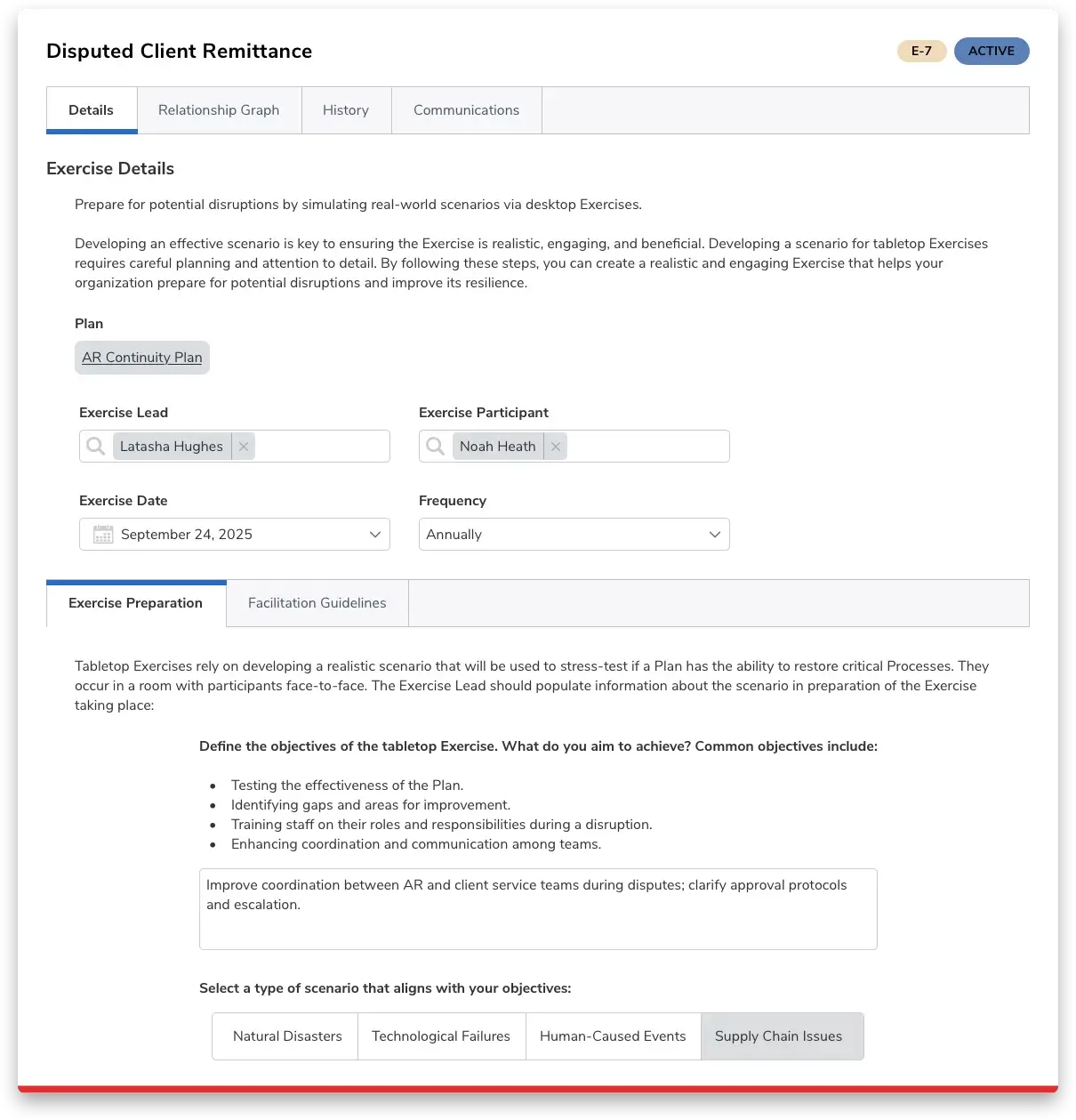
Link continuity plans to risk and compliance data to build a more resilient program.
Connect continuity plans with your existing risk registers, control library, and regulatory obligations for integrated planning and oversight.
- Deeper insights: Understand the full impact by linking BIAs and plans to risks, controls, and obligations
- Simplified reporting: Create unified reports across risk, continuity, and compliance.
- Program visibility: Enable leadership to understand preparedness in context.
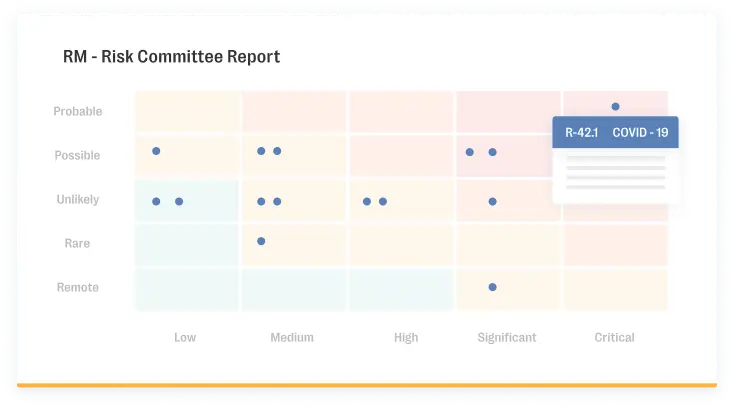
Build continuity plans that work under pressure
See it in ActionFrequently Asked Questions about BCM Software
- What is Business Continuity Management (BCM) software?
-
Business Continuity Management (BCM) software helps organizations plan, test, and execute activate strategies to maintain critical operations during disruptions. Unlike basic Business Continuity Planning (BCP) tools, BCM platforms centralize continuity data and, link processes to risk, and provide [YH1] structured workflows for Business Impact Analyses (BIAs), continuity strategies, and readiness testing to ensure programs are audit-ready and aligned with regulatory standards.
- What is the difference between BCP and BCM software?
-
BCP (Business Continuity Planning) software focuses on documenting and executing continuity plans. BCM (Business Continuity Management) software expands on that by delivering a complete program: BIAs, risk assessments, resource and dependency mapping, testing exercises, and ongoing monitoring. BCM software enables organizations to move from static plans to dynamic, actionable continuity programs.
- What is a Business Impact Analysis (BIA) and why is it important?
-
A Business Impact Analysis (BIA) identifies critical business processes, evaluates the impact of disruptions, and determines recovery priorities. BIAs are the foundation of a strong BCM program because they help organizations align recovery objectives with operational and regulatory expectations. A well-executed BIA informs Recovery Time Objectives (RTO), Recovery Point Objectives (RPO), and Maximum Tolerable Downtime (MTD), guiding continuity strategies and resource planning.
- How often should we update our Business Impact Analysis (BIA)?
-
Industry best practice is to review BIAs annually or whenever significant changes occur in critical processes, resources, or dependencies. Regulatory frameworks such as ISO 22301 and FFIEC guidance recommend updating BIAs following major business disruptions or structural changes to maintain audit readiness and program effectiveness.
- What are RTO, RPO, and MTD in business continuity planning?
-
- Recovery Time Objective (RTO): The maximum time a process can be offline before it impacts business operations.
- Recovery Point Objective (RPO): The maximum acceptable data loss measured in time.
- Maximum Tolerable Downtime (MTD): The absolute limit beyond which an outage threatens the organization’s viability.
These metrics guide continuity strategies and ensure critical processes are prioritized during recovery.
- How do exercises improve business continuity readiness?
-
Exercises simulate real-world disruptions to validate continuity plans and identify gaps. Structured tabletop or desktop exercises help teams confirm they can meet RTO and RPO thresholds, refine recovery workflows, and demonstrate operational resilience to executives and regulators. Many frameworks (ISO 22301, NIST SP 800-34, PRA) now require exercises as part of operational resilience programs.
- What is dependency and resource mapping in BCM?
-
Dependency and resource mapping identifies the internal and external assets, people, locations, and third parties critical to maintaining business processes. Effective mapping ensures alternative resources and strategies are in place to sustain operations when key dependencies fail, improving resilience and reducing risk exposure.
- How does BCM software help with regulatory compliance?
-
Modern BCM software provides audit-ready records of ownership, recovery strategies, and testing exercises. It aligns continuity programs with operational resilience regulations such as ISO 22301, FFIEC, NIST 800-34, PRA PS6/21, and OSFI E-21, enabling organizations to demonstrate readiness and reduce regulatory risk.
Whatever your needs, Resolver has a solution.
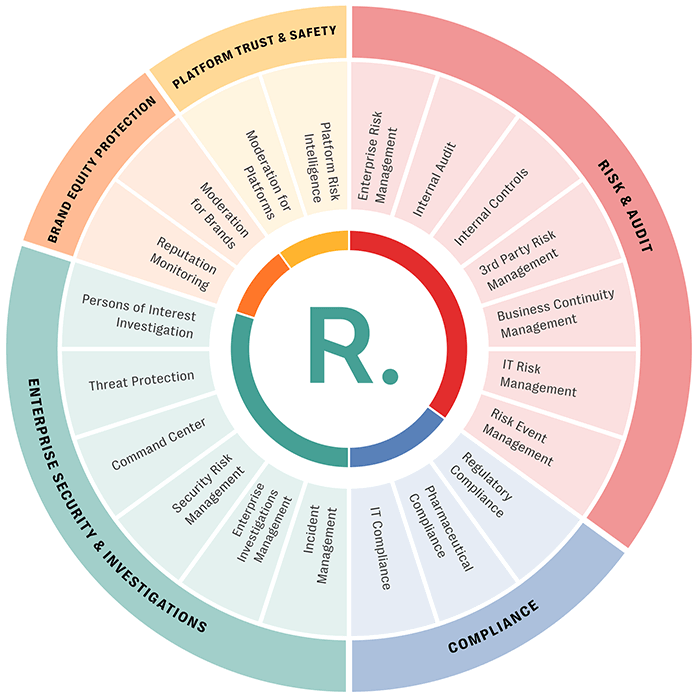
Discover More Products
Enterprise Risk Management
Understand the interconnectedness of your risk and the effectiveness of your controls with Resolver’s integrated risk management software for improved organizational resilience.
Regulatory Compliance Software
Save time by monitoring all regulatory compliance activities, providing insights into key risk areas, and then focusing resources on addressing regulatory concerns. Improve compliance testing efficiency by up to 75%.
Third-Party Risk Management
Designed to streamline vendor and third-party risk management, our software solution empowers organizations to make informed sourcing decisions, build resilient supply chains, and ensure compliance.